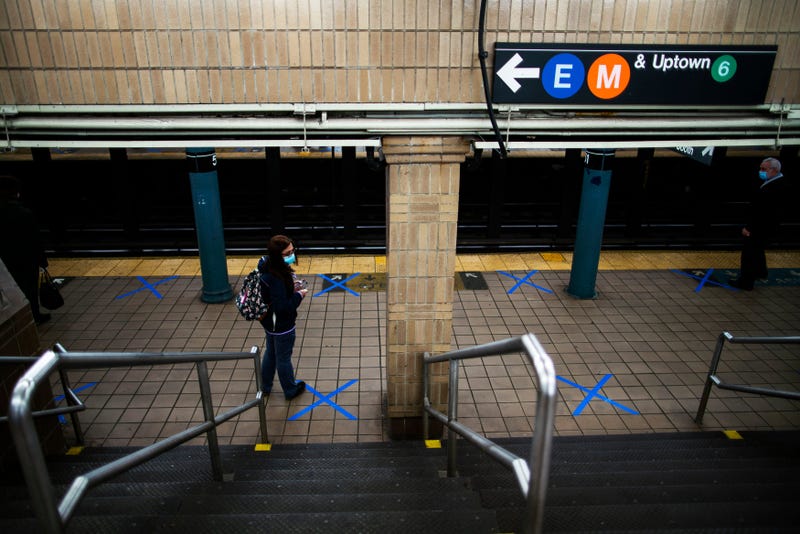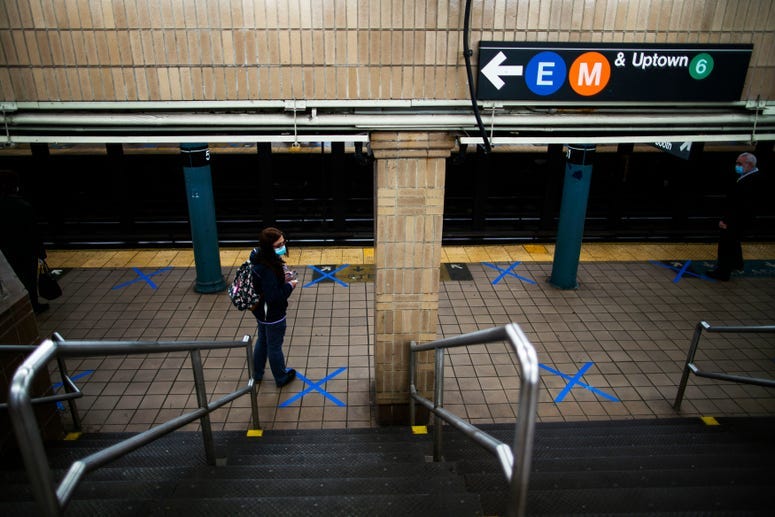
NEW YORK (1010 WINS) – The MTA could implement a number of measures, including reserved seats, as it returns to full service amid ongoing fears about the coronavirus, Chairman Pat Foye said.
Foye told 1010 WINS on Wednesday and the Wall Street Journal’s "The Journal" podcast earlier this week that reserved seats and staggered hours are among the measures being considered by the MTA.
Foye said there’s a chance that riders may have to reserve seats on trains or buses, at least temporarily, to help control crowding.
“I think agencies around the world have done things like metering,” Foye said on the podcast. “I think there ought to be consideration of reserving a space at least for some period of time on a subway or bus, using for instance the technology that we are all familiar with that TicketMaster uses.”
LISTEN LIVE: 1010 WINS' 24/7 coverage of the coronavirus outbreak
Speaking on 1010 WINS Wednesday morning, Foye said “we’re looking at everything, everything is on the table.” He said staggered hours could help control ridership during the busy morning and evening rush.
“I think the first thing that we're going to be looking at are staggered hours, and staggered days of work would be one, and we're appealing to the business community, which, frankly, many of members of which are already contemplating that,” Foye said. “Second would be a continuation of telework and remote working, which I think will be a part of life in New York and around the country going forward.”
“But we're going to be looking at technologies that can control, that can first monitor—we've got cameras on almost every station, those cameras can be used together with analytics to determine the level of passengers on a platform, passengers on a mezzanine, and we're going to be looking at that,” Foye said. “And we're going to be looking at ways of, in the interest of the safety of our customers and our employees, to control the number of passengers.”
Foye said the MTA is talking with the CDC, the trade associations for public transit in the United States and around the world and with peer agencies in Asia, Europe and North America, to determine what systems and protocols are being put into place.
“We’re looking at what every other agency is doing and figuring out how we can adopt that and make it fit New York City,” Foye said.
Foye also said there may be markings on subway cars indicating where riders should stand so they can keep their distance from one another.
“I think there is likely to be indications on the floor of the subway car as to enter here and leave here, in this area there ought to be no more than X passengers,” Foye told the podcast.

The approach has already been implemented in several subway stations across the city.
“We're seeing how that how that pilot goes, it appears to be having the desired effects and we'll make a decision together with public health officials at the MTA and at the state and city levels as to whether it ought to be expanded, but the early indications are positive,” Foye said. “We're also looking at a number of other things to control passenger volumes on subways, buses, and commuter rails.”
Foye said the important thing right now is for people to wear masks and observe social distancing.
“First is everybody—employees and customers—needs to wear a mask. That's the directive from the governor right now, that is going to continue to be the case for the foreseeable future,” Foye said. “Second, if you're sick you shouldn't be traveling. Third is right now, and this will not be the case by governor begins to lift New York on PAUSE, but right now the people riding the subways, buses, commuter rails should be first responders and essential employees and everybody else unless it's really critical ought to be home.”
The MTA chairman also told The Journal podcast he thinks everyone taking the subway and buses will likely be wearing face coverings for the foreseeable future.
“I think you are going to see, everybody, every employee and every passenger having a mask or a bandana or a scarf or a facial covering. I think that’s de rigueur and I think there will be great social pressure in every context including transit to wear your mask," Foye said. "I think it’s likely that the cars and the stations will have been disinfected the evening before, the night before, so I think there will be the smell of bleach or the application of antimicrobial products.”
Foye also said the MTA’s so-called Temperature Brigade will likely stick around to continue checking employees before they work. The brigade has been taking the temperatures of employees at subway, bus, Metro-North, Long Island Rail Road and bridge and tunnel facilities since early April.
“I think that’s likely to continue,” Foye said of the checks.
He also said he thinks cashless transactions will continue to be encouraged since they mean less riders are interacting with MTA employees and touching surfaces across the system.
